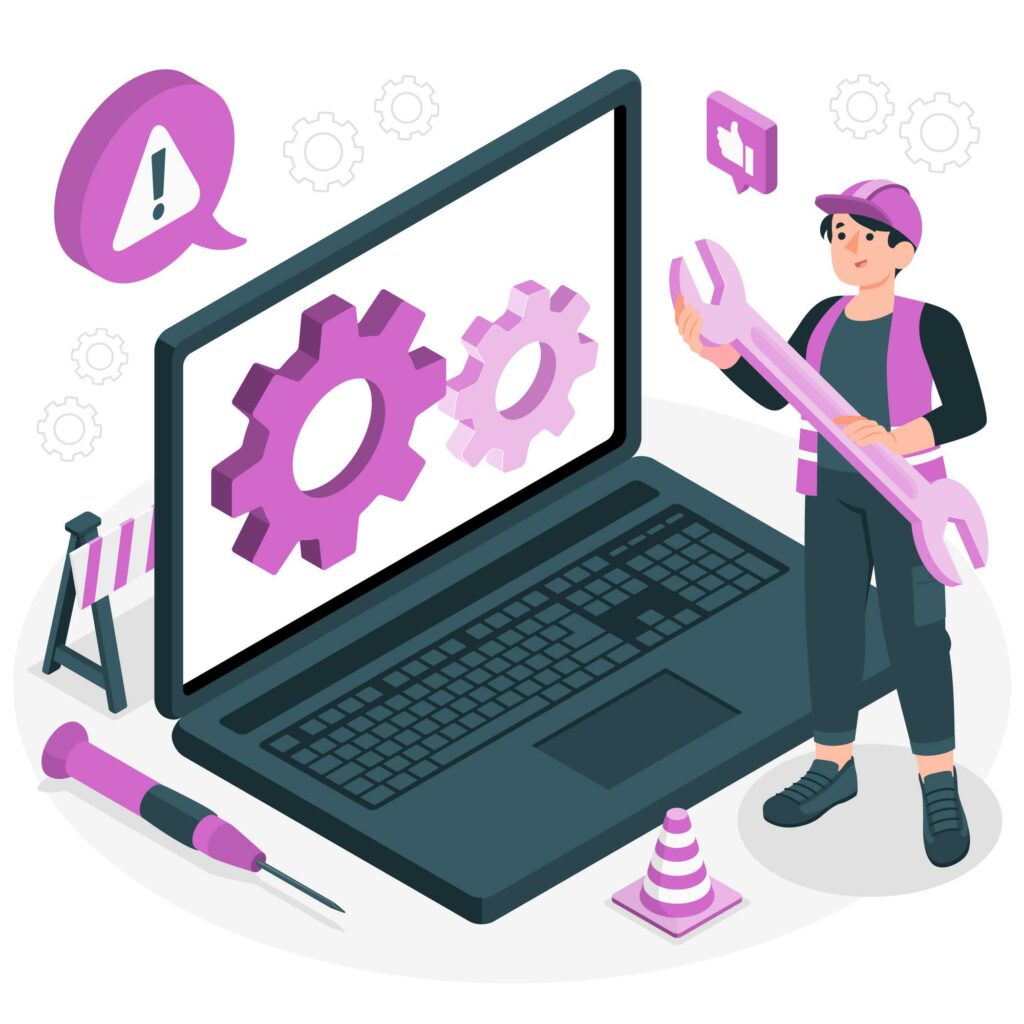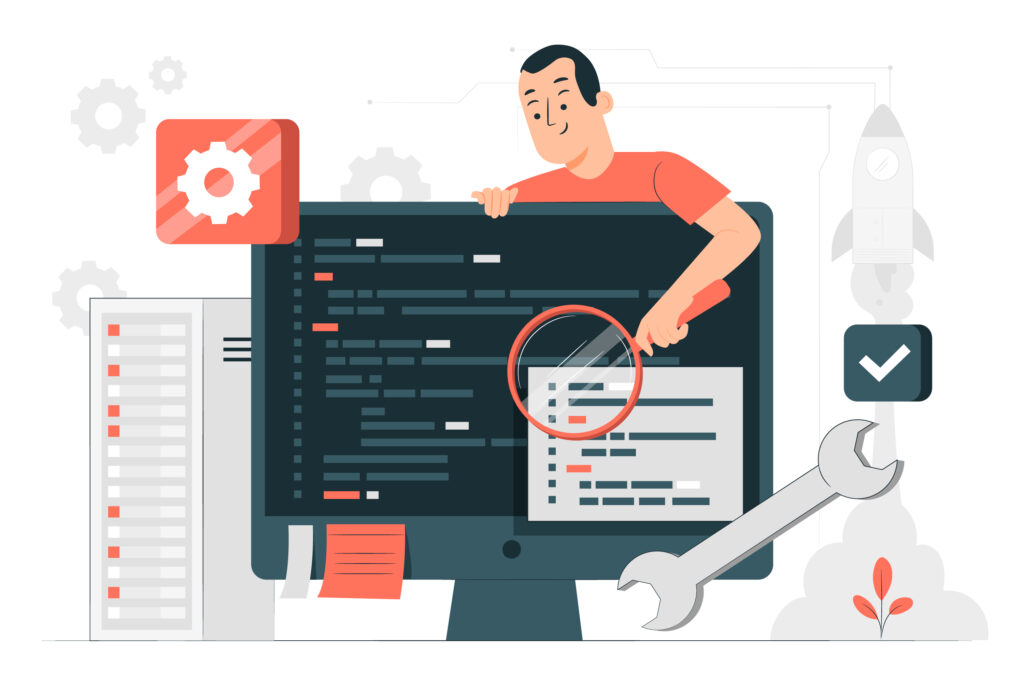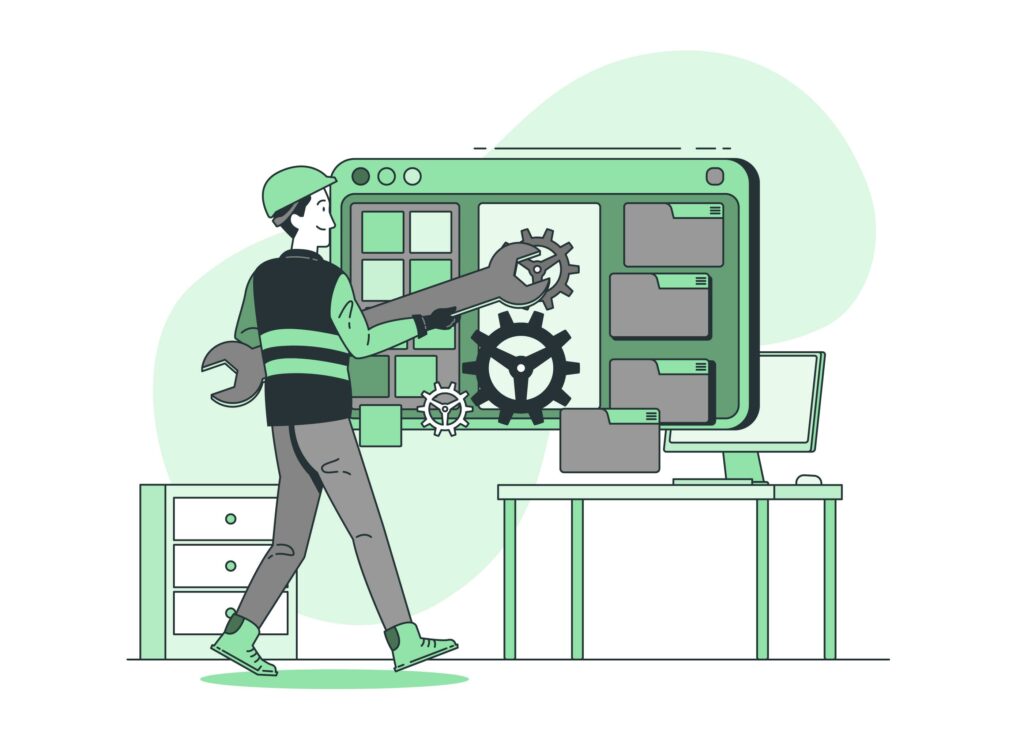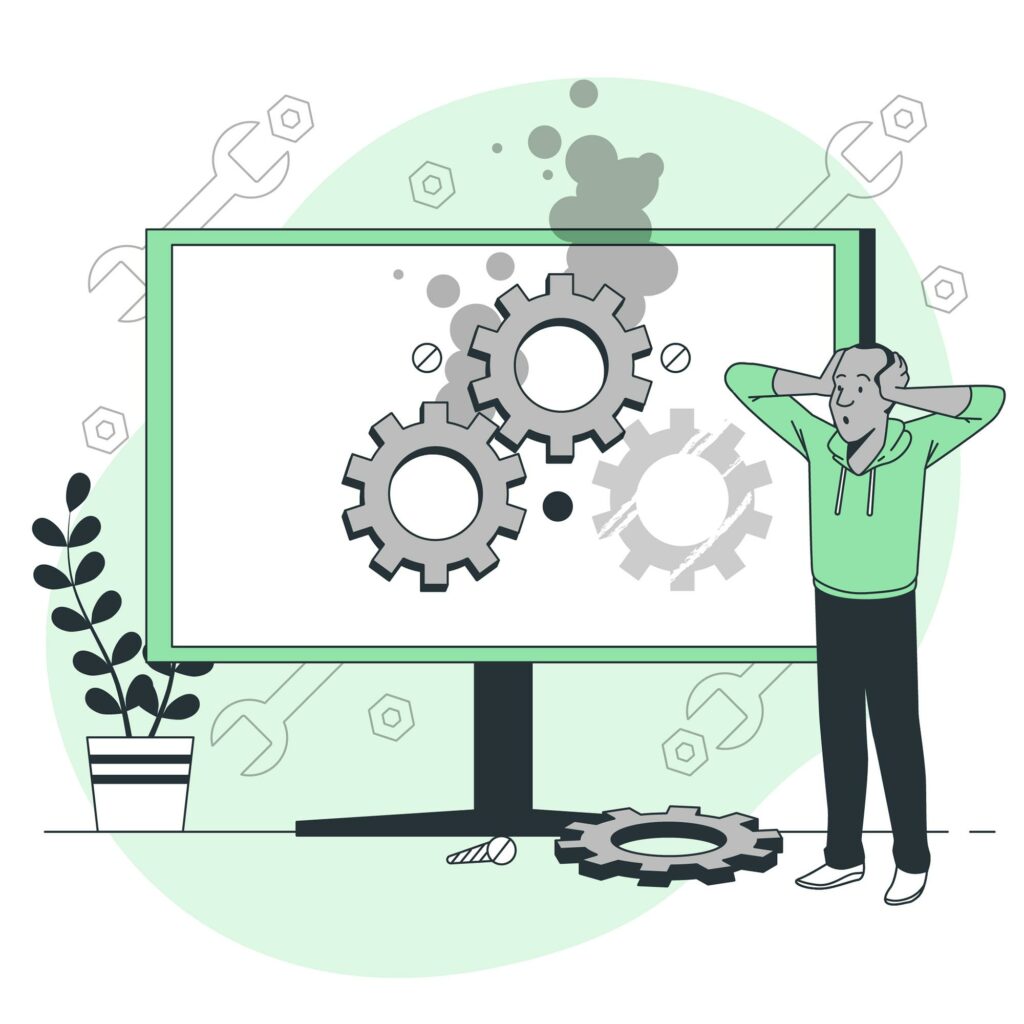Many businesses mistakenly believe that the software maintenance process and development concludes once the product is launched. However, the reality is far different. After introducing your software to the market, additional efforts become crucial for its sustained success. Even the most impeccably designed software can encounter unforeseen issues. Moreover, user feedback often provides invaluable insights for necessary enhancements.
The Continuous Nature of Software Maintenance Process
Software maintenance is not a one-time activity but an ongoing process that spans the entire life cycle of a software system. Its primary objective is multifaceted: to ensure the software functions correctly, efficiently, securely, and continues to meet the evolving needs of its users.

This encompasses a wide range of activities, including bug resolution, feature addition, performance enhancement, and adaptation to new hardware or software environments.
When initiating a new software project, it’s imperative to factor in the associated costs and efforts of maintenance. A well-thought-out maintenance strategy should be comprehensive, encompassing aspects like rigorous testing, version control, stakeholder communication, and more.
Maintaining software, especially complex systems, can be intricate and resource-intensive, underscoring the necessity of considering these aspects right from the project’s inception.
Key Components of Software Maintenance Process
Understanding the various facets of software maintenance can provide clarity and direction. Here are some of the critical components:
- Bug Fixing: This involves identifying and rectifying software errors and glitches to ensure optimal performance and user satisfaction.
- Enhancements: Software must evolve to align with changing user needs. This involves adding new functionalities or refining existing ones.
- Performance Optimization: As user expectations for speed and efficiency increase, continuous efforts to enhance software performance become paramount.
- Porting and Migration: With advancements in technology, adapting the software to run seamlessly on updated hardware or software platforms is essential.
- Re-Engineering: To ensure long-term viability and scalability, periodic improvements to the software’s design and architecture are crucial.
- Documentation: Comprehensive and updated documentation aids in understanding and troubleshooting the software, benefiting both developers and end-users.
Understanding the Types of Software Maintenance Process
There isn’t a one-size-fits-all approach to software maintenance. In fact, there are four primary maintenance categories that every software product should undergo throughout its life cycle:

1. Corrective Maintenance: This reactive approach focuses on addressing errors, bugs, and faults as they are reported or detected. It aims to maintain software functionality and security, ensuring a seamless user experience.
2. Adaptive Maintenance: This proactive approach involves adapting the software to the evolving technological landscape. It encompasses updating third-party technologies, operating systems, and other dependencies to keep the software current and relevant.
3. Preventative Maintenance: This anticipatory approach aims to identify and resolve potential issues before they impact the software’s performance or user experience. Scheduled in advance, it focuses on enhancing scalability, efficiency, and long-term viability.
4. Perfective Maintenance: This focuses on refining and enhancing existing features to improve software quality, usability, and user satisfaction. While this is essential for the software’s future success, changes should be communicated effectively to users to avoid negative reactions.
The Need for Maintenance
Maintenance is indispensable for several reasons:
- Error Correction: To rectify errors and ensure smooth software operation.
- Adaptation to User Requirements: As user needs evolve, software must adapt accordingly to remain relevant.
- Hardware/Software Updates: With technological advancements, software must be updated to remain compatible with new hardware or software platforms.
- Performance Optimization: To ensure optimal software performance and responsiveness.
- Code Optimization: To improve efficiency, reduce resource consumption, and enhance overall system stability.
- Component Modifications: To introduce new features or remove obsolete ones, ensuring the software remains competitive and user-friendly.
The Software Maintenance Process
A structured approach to software maintenance is essential for its effectiveness and efficiency. The maintenance process typically consists of several key stages:
- Preparation: This involves problem identification, reporting, analysis, and prioritization. It sets the foundation for subsequent maintenance activities.
- Execution: This phase encompasses solution development, documentation, and rigorous testing to ensure quality and reliability.
- Post-deployment: Verification and validation activities are conducted to ensure successful maintenance outcomes, potentially involving user acceptance testing for feedback and validation.
Advantages of Software Maintenance

Investing in regular software maintenance offers numerous benefits:
- Improved Software Quality: Regular maintenance ensures the software functions correctly, efficiently, and reliably.
- Enhanced Security: Maintenance includes timely security updates and patches to protect against potential threats.
- Increased User Satisfaction: A well-maintained software product remains relevant and user-centric, leading to higher satisfaction and adoption rates.
- Extended Software Life: Proper maintenance delays the need for costly replacements, extending the software’s lifespan.
- Cost Savings: Proactive maintenance can prevent larger, more expensive problems, reducing the overall cost of software ownership.
- Better Alignment with Business Goals: Regular maintenance ensures the software remains aligned with the changing needs and goals of the business, improving overall efficiency and productivity.
- Competitive Advantage: Regular maintenance keeps the software ahead of competitors by improving functionality, performance, and user experience.
- Compliance with Regulations: Maintenance ensures the software complies with industry-specific regulations and standards, especially in sectors like healthcare, finance, and government.
- Improved Collaboration: Maintenance fosters better collaboration between different teams, such as developers, testers, and users, leading to improved communication and problem-solving.
- Reduced Downtime: Maintenance activities help reduce system failures or errors, minimizing disruptions to business operations and reducing the risk of lost revenue or customers.
- Improved Scalability: Regular maintenance ensures the software is scalable and can handle increased user demand, which is particularly important for growing businesses or widely-used software applications.
Disadvantages of the Software Maintenance Process

While the benefits of software maintenance are numerous, it also comes with its challenges:
- Cost: Maintenance can be resource-intensive, requiring significant time, effort, and expertise.
- Schedule Disruptions: Maintenance activities can disrupt the normal operations and schedule of the software, potentially causing downtime or inconvenience.
- Complexity: Maintaining and updating complex software systems can be challenging, requiring specialized knowledge and skills.
- Risk of Introducing New Bugs: The process of fixing bugs or adding new features can sometimes introduce new issues or errors, emphasizing the importance of thorough testing.
- User Resistance: Users may resist changes or updates to the software, leading to decreased satisfaction and adoption rates.
- Compatibility Issues: Maintenance activities can sometimes lead to compatibility issues with other software or hardware, complicating integration.
- Lack of Documentation: Inadequate or outdated documentation can make maintenance activities more challenging and time-consuming.
- Technical Debt: Over time, the cost of maintaining and updating the software can become higher than developing a new system from scratch.
- Skill Gaps: Maintaining software systems may require specialized skills or expertise that may not be readily available within the organization, leading to potential outsourcing or increased costs.
- Inadequate Testing: Insufficient or incomplete testing after maintenance can lead to unresolved issues, bugs, and potential security vulnerabilities.
- End-of-life Concerns: Eventually, software systems may reach their end-of-life stage, making further maintenance and updates impractical or cost-prohibitive, necessitating system replacement.
[Want to learn more on Software maintenance and its importance in your business? Click here to reach us.]
Conclusion
In conclusion, software maintenance is a vital component of the software development life cycle, ensuring the longevity, functionality, and relevance of software products. While it comes with its set of challenges, the benefits of regular maintenance far outweigh the drawbacks.
Organizations must prioritize and invest in comprehensive software maintenance strategies to maximize the value, performance, and user satisfaction of their software products. They can also employee advnaced team such as BObcares to imporve their software maintenance process.
By doing so, they can stay ahead of the competition, meet changing user needs, comply with industry standards, and ultimately achieve business success.
PREVENT YOUR SERVER FROM CRASHING!
Never again lose customers to poor server speed! Let us help you.
Our server experts will monitor & maintain your server 24/7 so that it remains lightning fast and secure.




0 Comments